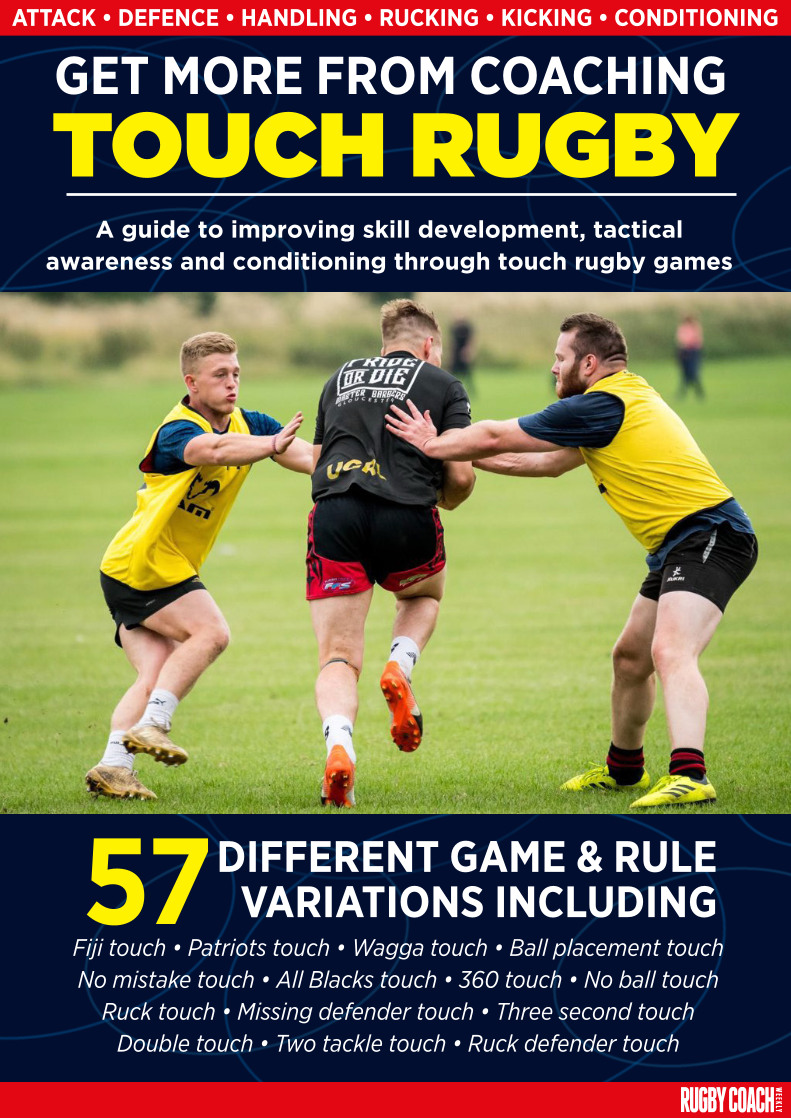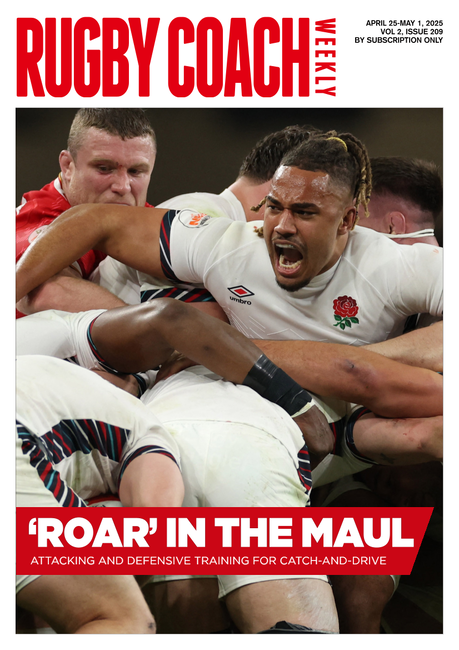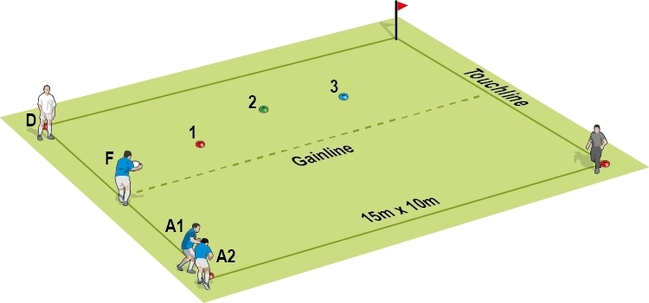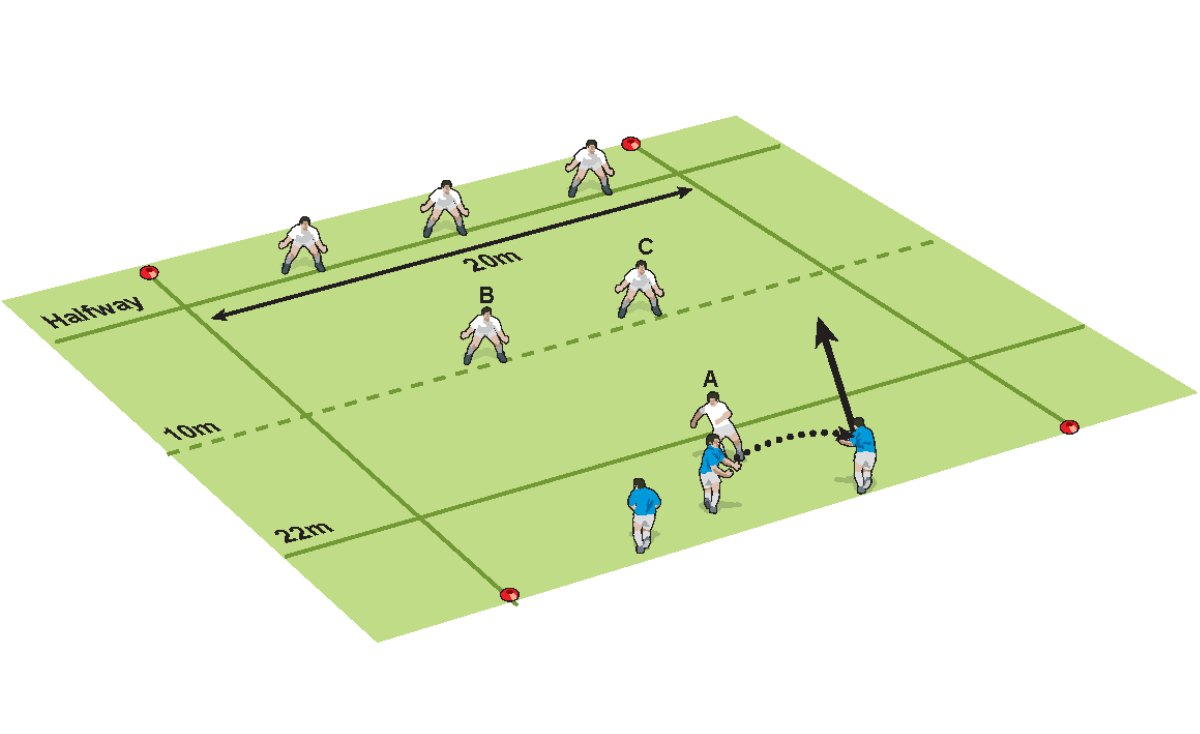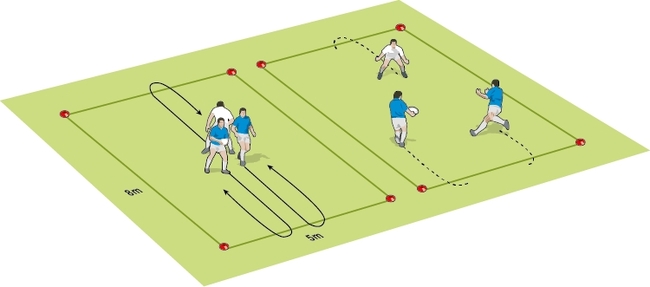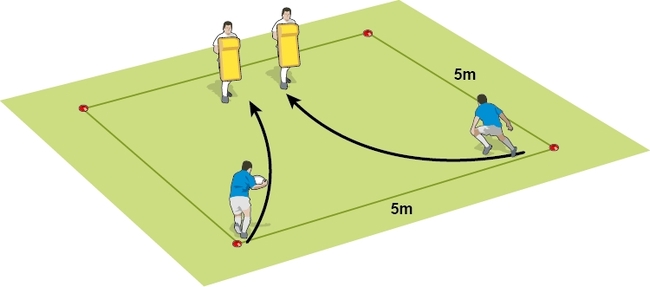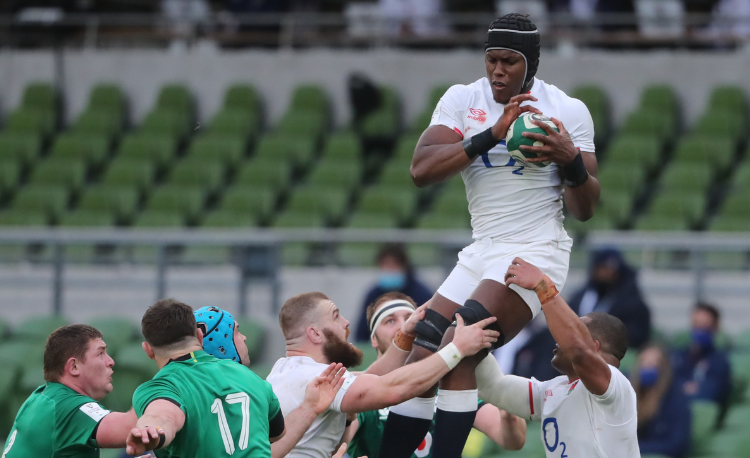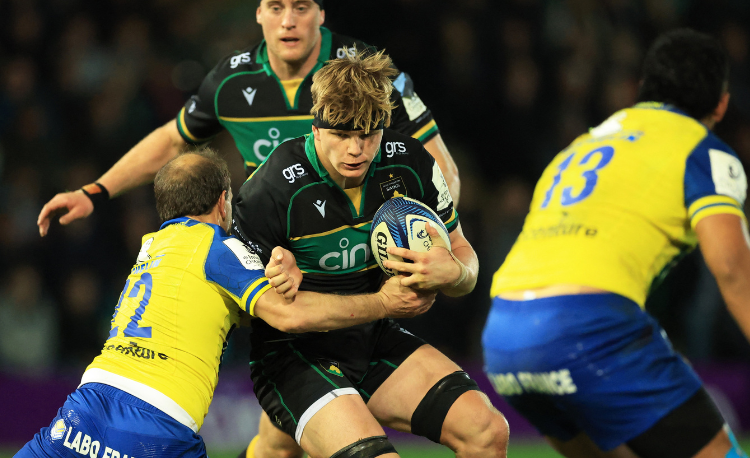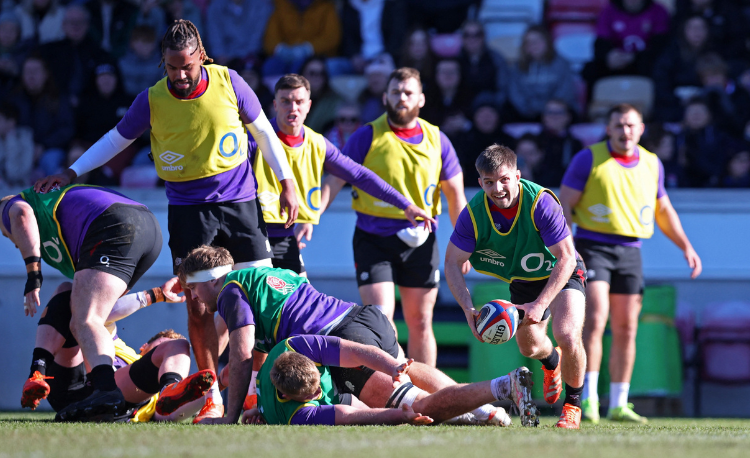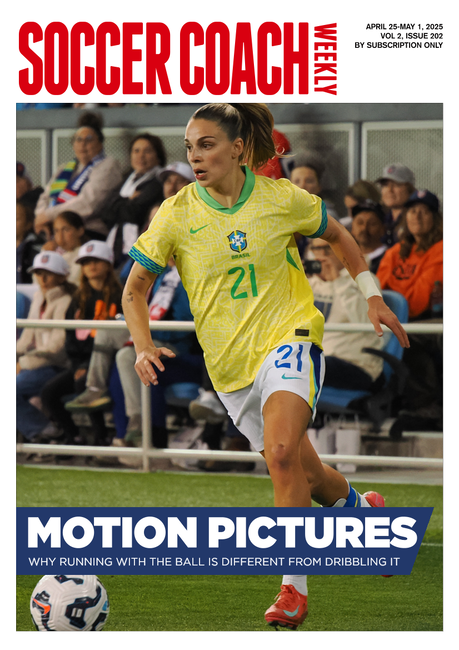Return to play: Defensive emphasis 2 v 1s
Attackby Dan Cottrell
2 v 1s offer an ideal return to play exercise because you just need three players. And the players can work in bubbles.
Develop your individual’s defence by taking them on from just making good tackles. Help them decide when to tackle to prevent the opposition keeping the ball alive.
In a 2 v 1 situation, which player should be targeted by the tackler? Normally you would say the ball carrier, but a more intelligent player will target both players, knowing when to commit to the tackle to prevent the pass or slow down the momentum.
Each defender needs to work out:
These thought processes can be rehearsed in slow motion. Set up a 2 v 1 situation in different size boxes, and play it out at walking pace. The tackler should be talking through his options.
With more empowered players, they can discuss the options in groups after each situation.
Once the defenders have begun to ask themselves the questions and found some solutions, then you need to change the pace and variety of the situations.
By reducing thinking time, mixing up forwards and back, plus changing the space in which the decisions are made, you introduce new dimensions:
You can use 2 v 1 games, with the emphasis on the defender. Split your squad into threes. They play out a series of 2 v 1 “matches” against other groups of three. The attack and defence rotate, and the players rotate their roles.
The match conditions are set out below.
Game intelligent attributes
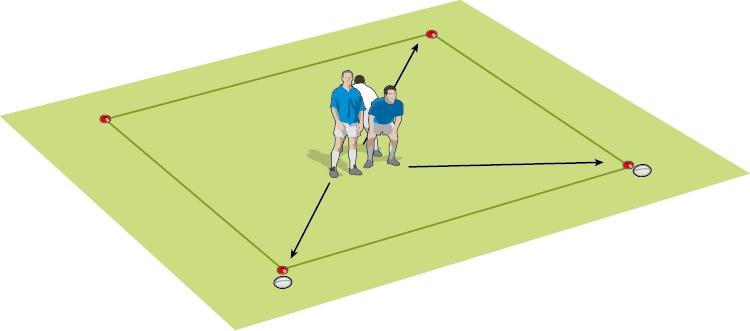

Develop your individual’s defence by taking them on from just making good tackles. Help them decide when to tackle to prevent the opposition keeping the ball alive.
In a 2 v 1 situation, which player should be targeted by the tackler? Normally you would say the ball carrier, but a more intelligent player will target both players, knowing when to commit to the tackle to prevent the pass or slow down the momentum.
Each defender needs to work out:
- Which player offers the biggest threat?
- Can the ball carrier be forced into making a pass?
- Is this going to be an offensive or defensive tackle?
WALK THROUGH THE OPTIONS
These thought processes can be rehearsed in slow motion. Set up a 2 v 1 situation in different size boxes, and play it out at walking pace. The tackler should be talking through his options.
With more empowered players, they can discuss the options in groups after each situation.
UPPING THE PACE
Once the defenders have begun to ask themselves the questions and found some solutions, then you need to change the pace and variety of the situations.
By reducing thinking time, mixing up forwards and back, plus changing the space in which the decisions are made, you introduce new dimensions:
- Different relative speeds of attackers and defenders to adjust to.
- The distances between the players.
- The skills and sizes of the players.
PLAYING GAMES TO UNDERSTAND
You can use 2 v 1 games, with the emphasis on the defender. Split your squad into threes. They play out a series of 2 v 1 “matches” against other groups of three. The attack and defence rotate, and the players rotate their roles.
The match conditions are set out below.
Game intelligent attributes
- Picks the tackle that will work best for the player he is tackling. For instance, a small winger will not attempt to drive back a big number 8.
- He will stay balanced and not over commit until the moment he needs to tackle.
- He will not fail to make a tackle. Even if the ball carrier releases the pass just before the tackle, he must be tackled to the ground. This prevents support.
- He won’t be “dummied”. Because he stays balanced, he can move easily between the ball carrier and potential receiver.
2 v 1 MATCHES

- In a 5m box, stand two attackers and a defender in the middle back-to-back. Get one of the attackers to shout “GO”, the defender runs to one of the cones on the try line he is defending, and the attackers to the other two cones.

- One of the attackers picks up the ball and they attack.
- The attack score a point for a try, the defender one point for preventing the try. Any infringements mean a point for the opposition. The attack can offload, but cannot ruck or maul.
- Each “match” has six rounds, meaning each player defends once. Then swap the teams for another set of matches. Tot up the scores at the end.
Thank you for reading
to enjoy 3 free articles,
our weekly newsletter, and a free coaching e-book
Or if you are already a subscriber, login for full access
Newsletter Sign Up
Coaches Testimonials

Gerald Kearney, Downtown Las Vegas Soccer Club

Paul Butler, Florida, USA

Rick Shields, Springboro, USA

Tony Green, Pierrefonds Titans, Quebec, Canada
Subscribe Today
Be a more effective, more successful rugby coach
In a recent survey 89% of subscribers said Rugby Coach Weekly makes them more confident, 91% said Rugby Coach Weekly makes them a more effective coach and 93% said Rugby Coach Weekly makes them more inspired.
Get Weekly Inspiration
All the latest techniques and approaches
Rugby Coach Weekly offers proven and easy to use rugby drills, coaching sessions, practice plans, small-sided games, warm-ups, training tips and advice.
We've been at the cutting edge of rugby coaching since we launched in 2005, creating resources for the grassroots youth coach, following best practice from around the world and insights from the professional game.

